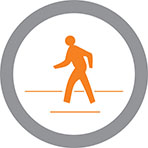 In communities throughout the United States, trampoline park businesses are springing up. What seems like a safe, indoor activity can actually be quite a hazard to young children. What makes things worse is that many of these businesses require a release to be signed by parents and guardians for children. Some of the releases are valid; some are not. It depends on the language of the release, circumstances of the incident, and the laws of the state where the trampoline park is located.
In communities throughout the United States, trampoline park businesses are springing up. What seems like a safe, indoor activity can actually be quite a hazard to young children. What makes things worse is that many of these businesses require a release to be signed by parents and guardians for children. Some of the releases are valid; some are not. It depends on the language of the release, circumstances of the incident, and the laws of the state where the trampoline park is located.
In 2017, almost 18,000 people went to the emergency room due to injuries obtained at a trampoline park. The bulk of these injuries are explained by one thing—an unsafe transfer of energy. All the trampolines are connected, so the energy created from bouncing transfers through all the trampolines. When a child bounces, they can be launched higher than anticipated and land back on a surface which could be at a different height than anticipated. This transfer of energy can result in nearly 1,000 pounds of pressure, which can break any bone in a person’s body. There have been at least 6 deaths at trampoline parks since 2012.
Trampoline parks in the United States currently have no federal oversight, so every park is unique. While the majority of the businesses have patrons sign a release waiver, they can be different from park to park. These waivers typically address risks that are inherent to trampoline activities, like a sprained ankle. However, some parks do not even require a waiver. However, just signing a waiver does not always effectively preclude a parent from filing a lawsuit on behalf of the injured child for the personal injuries. In the State of Florida, there exceptions for waivers signed by minors. For minors, those documents may be limited to non-commercial situations, such as charity or school events. Because trampoline parks are for-profit businesses, the waivers provided by them may not be enforceable. If you or your child are injured at a trampoline park, contact an injury attorney for consultation or representation.
 Child Injury Lawyer Blog
Child Injury Lawyer Blog




